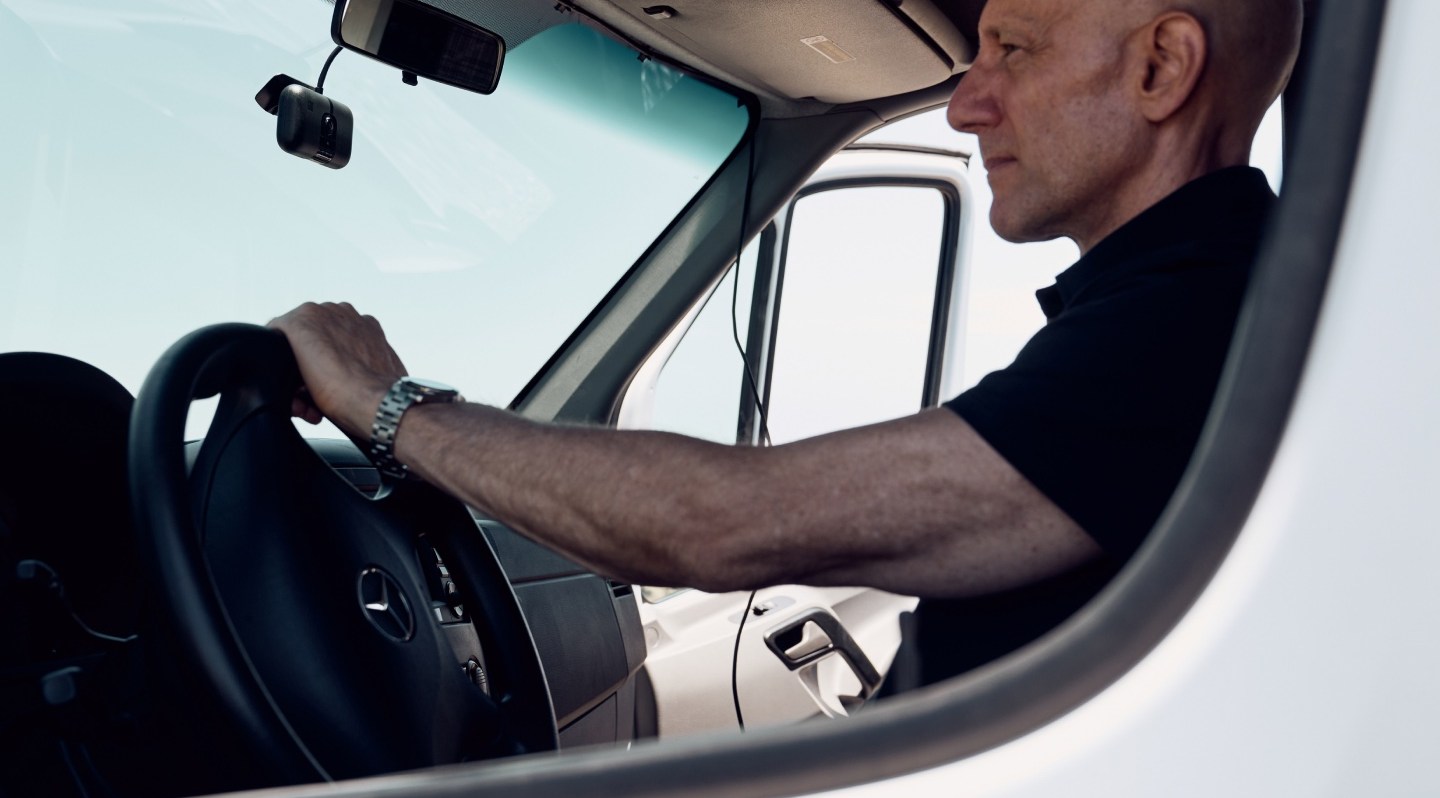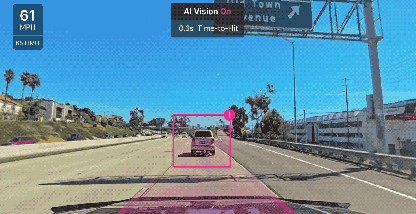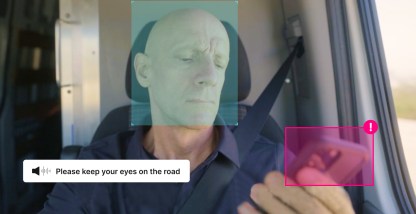Recent ATRI research highlights that fleets that don’t use dual-facing dash cams (DFDC) face increased liability. Still, some fleets remain hesitant to adopt in-cab cameras, citing privacy concerns and potential driver churn.
DFDCs give fleets a range of benefits beyond offering indisputable evidence in defense of drivers. DFDCs equip fleets with actionable insights, enabling them to pinpoint and correct risky driving behaviors before they become an issue. But with attrition rates pushing towards 100% on an annual basis, things that negatively impact employee retention are dealt with very carefully.
So what’s the real story? Our team dove into the data to better understand the impact of dual-facing dash cams on driver retention. What we found should give fleet leaders confidence – DFDCs actually cause driver retention rates to go up.
Dash cam type doesn’t impact driver retention
For this study, we compared retention rates between three driver groups: DFDC users, road-facing dash cam (RFDC) users, and fleets operating without cameras. We analyzed data from 31,028 drivers across 65 active Motive fleets. Fleets had 250 to 1,000 active vehicles in the past two months.
Our findings were clear: dash cam type does not impact driver retention. There’s no retention difference between fleets using DFDCs, RFDCs, or no cameras. In fact, fleets using DFDCs saw a 3% increase in driver retention after 75 weeks when benchmarked against RFDC users.
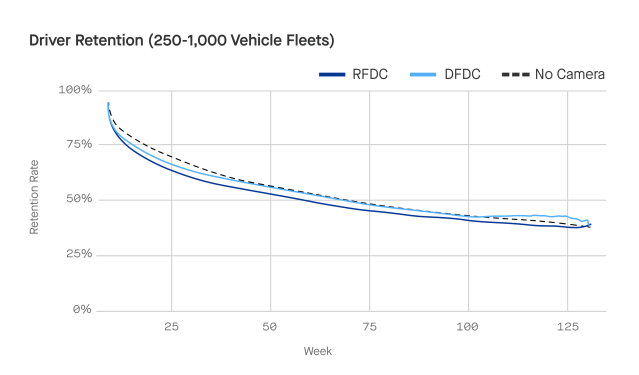
To ensure a thorough analysis, we analyzed the weekly retention of drivers onboarded between December 28, 2020, and December 27, 2021. This gave us at least 75 weeks’ worth of data.
Implementing more DFDCs doesn’t affect driver retention
Diving into specific fleet data, it’s evident that adopting more DFDCs doesn’t negatively affect driver retention. We saw this across fleets of all sizes, from those with 800+ vehicles to those managing a fleet of 4,000+.
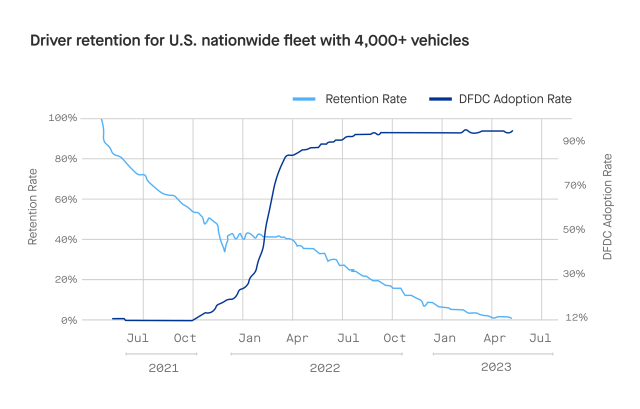
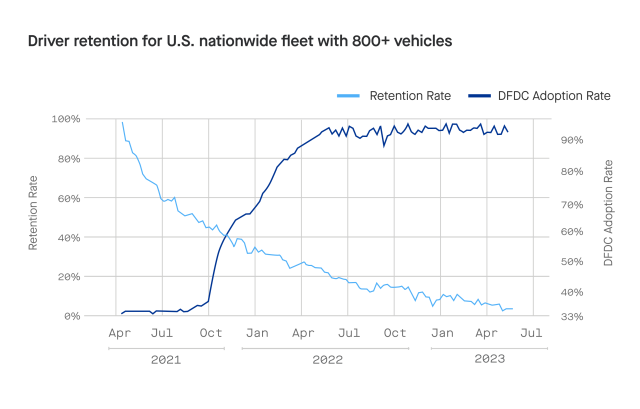
Fleets with DFDCs tend to retain drivers longer
In fact, fleets using DFDCs tend to retain drivers longer than those with RFDCs, as evident in this fleet with 800+ vehicles.
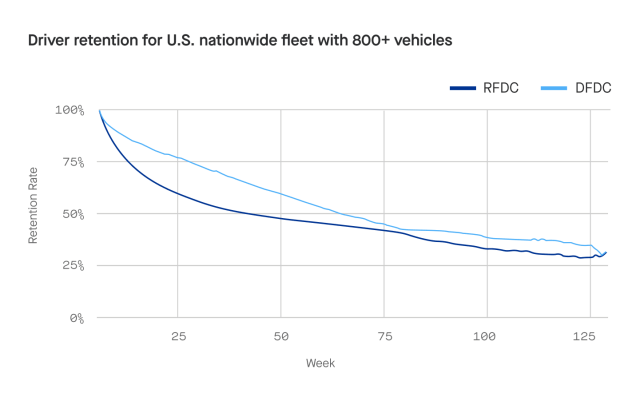
Crash rates halved after reaching 90% DFDC adoption.
A notable observation from our study is the sharp drop in crash rates for a U.S. nationwide fleet with 4,000+ vehicles. After reaching 90% DFDC adoption, the fleet saw a 50% reduction in their crash rate, dropping from 0.4 to 0.2 crashes per 10,000 miles in just 10 months.
Our analysis, leveraging Motive’s robust crash data, traced crashes per 10,000 miles, both pre- and post-90% DFDC adoption. In general, as the percentage of DFDCs increases, crash rates go down accordingly.
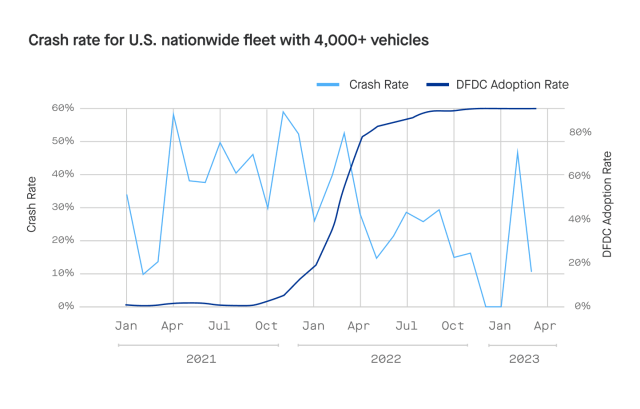
Explore the Motive dual-facing AI Dashcam
The data is clear: the advantages of our dual-facing dash cams significantly outweigh any concerns about driver resistance. Our research underscores how our AI-powered DFDCs improve road safety without impacting driver retention. Request a demo to see how Motive AI Dashcams can help your fleet today.




